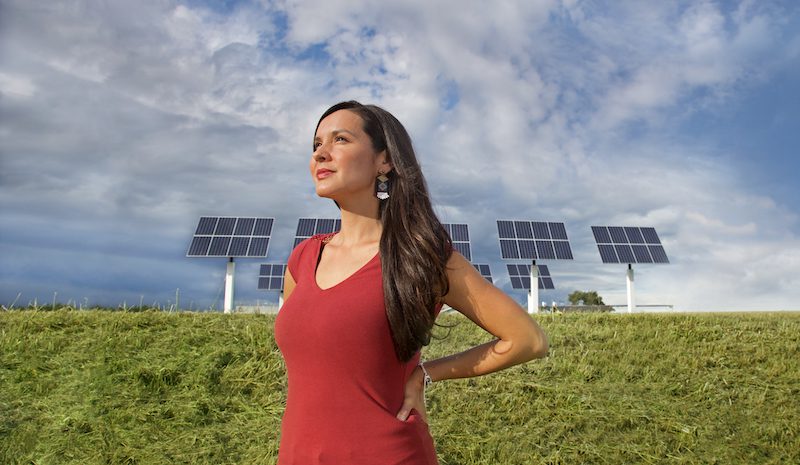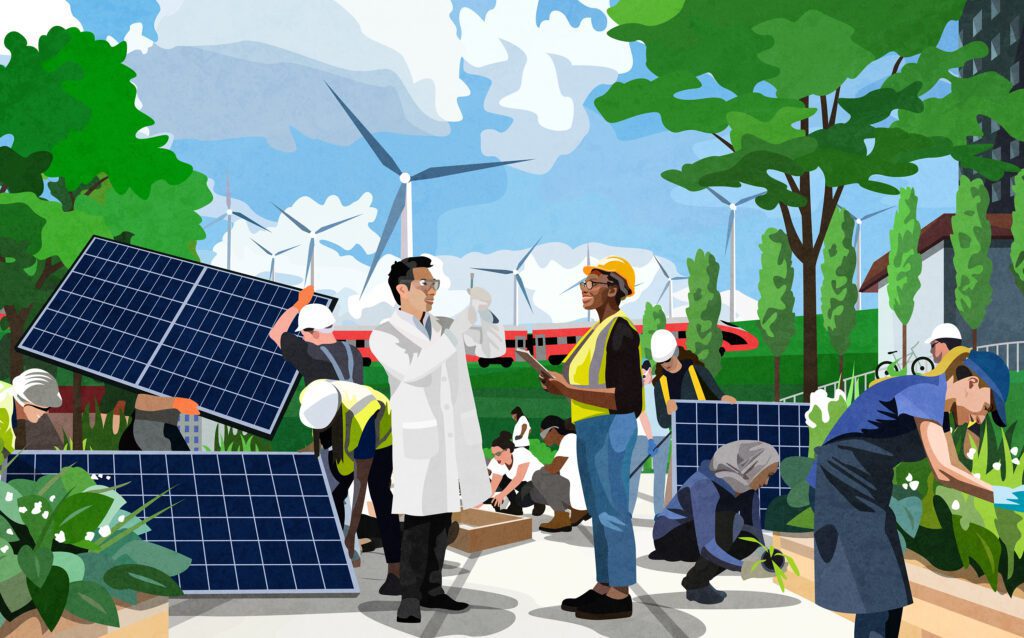This blog is co-authored with Alienor Rougeot, Climate and Energy Program Manager
Two prominent figures of Canada’s oil and gas industry were recently on Global TV’s politics show, The West Block with Mercedes Stephenson, where they spread a bunch of misinformation and half truths. We break down five of the myths they want Canadians to believe, and correct the record.
Who are the executives who spread the misinformation? One is Alex Pourbaix is the CEO of Cenovus, one of the biggest oil sands producers, who is regularly in the media talking about energy and climate change politics. The other was Kendall Dilling, CEO of the Pathways Alliance, a new group made up of oil sands producers like Cenovus, with the intention to push carbon capture, utilization, and storage (CCUS) to perpetuate fossil fuel production.
Myth: There is plenty of space for oil in the net-zero future.
Truth: A managed phase-out of oil and gas production is the only way to get to a safe and stable climate.
Fossil fuels are the main cause of the climate crisis, and the biggest threats to a stable climate is the continued production and consumption of them. This comes with massive greenhouse emissions that are rapidly changing the earth’s climate, with disastrous effects for our health, homes and economies.
Pourbaix, Dilling and the Pathways Alliance are trying to sell us a false story that oil and gas production can continue, and even grow, as long as the emissions from production are “captured” by unproven technologies like CCUS. That’s simply not the case.
CCUS does not capture the emissions from the final use of a product, like gasoline burned when using a car. And that is where the vast majority of emissions are released. Even if CCUS worked as promised – which is almost never the case, most projects end in failure – the technology only captures (some) emissions from making products like oil and gas. In 2021, overall annual emissions from oil and gas globally were 40,800 megatonnes of carbon dioxide equivalent (CO2e). And how much did CCUS capture? Only 43.7 megatonnes, around 0.1 percent.
The International Energy Agency has been clear. The path to net zero means not developing new oil and gas projects, scaling down current production, and transitioning to renewable energy sources.
Myth: The oil and gas industry has ready-to-deploy technology to get us to net-zero.
Truth: CCUS is an expensive wild-card. Renewable energy and energy efficiency are the most affordable and readily available green technologies we have.
As studies have shown, the technologies already exist to rapidly wind down fossil fuel use and move to renewable energy. The oil and gas industry is asking governments for tens of billions of dollars in subsidies for CCUS, which hasn’t been proven to work and doesn’t address the emissions from the use of oil and gas. This means billions of dollars are being redirected away from more cost effective measures like renewable energy , and energy efficiency upgrades. Every government dollar spent on CCUS is a dollar that doesn’t go to reliable solutions.
But does CCUS work?
More than 80 per cent of the CCUS projects attempted in the U.S. have ended in failure. And the small numbers of projects that do get built never perform as advertised. At a coal-fired power plant called the Boundary Dam in Saskatchewan, the carbon capture facility has never reached its annual targets. And much of the captured carbon gets used to pump more oil and gas out of the ground, which is called “enhanced oil recovery.” It is not a climate solution.
Pathways CEO Dilling mentions Shell’s gas-to-hydrogen Quest facility in Alberta. While Quest claims to be capturing 80 per cent of the carbon from a gas-to-hydrogen plant, when you consider the plant’s full emissions, as well as the emissions from the energy used to power the CCUS system and the methane leakage from the extraction and transportation of the fossil gas, the total capture rate falls to 39 per cent.
Myth: The oil and gas industry is the backbone of the Canadian economy.
Truth: The sector typically represents 5 per cent of GDP and less than 1 per cent of total employment.
In the interview, Pourbaix, CEO of Cenovus, hugely inflates numbers about the oil and gas sector’s importance on the Canadian economy.
The fossil fuel sector directly accounts for less than 1 per cent of all jobs in Canada. In 2019, there were 170,000 people employed in the fossil sector fuel, working across seven major fossil fuel sub-sectors such as exploration, development, extraction, refining, processing, distribution and fossil-fuel based electricty generation. Yet, Pourbaix claimed the upstream oil and gas industry, “this year, we employed 500,000 Canadians across the country.” Cenovus, the third largest oil producer in the country, directly employs fewer than 6,000 people.
In a typical year, the oil and gas industry makes up about five per cent of Canada’s economy, according to Statistics Canada, as measured by gross domestic product (GDP). But Pourbaix seems to pluck a l number twice as large out of the air. “I suspect that this industry is probably going to represent close to 10 per cent of the entire Canadian economy.”
Presenting made up numbers about oil and gas industry’s jobs and economic importance is pure misinformation.


Myth: The industry offers a bright future for its workers.
Truth: Automation and cost-cutting is already decimating employment numbers in the sector. The global energy transition is one more reason to look beyond oil and gas for stable employment.
The oil and gas ndustry has been on its own years-long campaign to reduce the size of its workforce as it automates jobs away and cuts costs. Before the pandemic started, 17 per cent of Canadian fossil fuel jobs already disappeared between 2014 and 2019. By 2021, the oil and gas industry employed 25,788 fewer workers than in 2014. Truck drivers are being replaced by autonomous, 400-tonne heavy-haul trucks at several oilsands mines. This is intentional: Cenovus Energy Executive Vice President Kiron McFadyen told investors in 2017 that they are actively working to “de-man” the oil sands.
There have been catastrophic human effects at companies like Suncor, another of the biggest producers, where cost cutting and negligence has led to a shocking number of deaths and injuries.
Myth: Despite a decrease in global demand for oil, Canadian oil will continue to thrive.
Truth: Global trends in demand and price make it very unlikely for Canadian oil to remain an economic engine for the country.
Pourbaix joins numerous fossil fuel executives and pro-oil politicians in arguing that even with a significant decrease in global oil demand, Canada’s oil and gas sector will find buyers – if governments fork over billions for CCUS.
Canada’s oil and gas will not be the last barrel standing. When demand for oil crunches, Canada’s oil and gas sector is the first to get left behind. And demand for oil is falling – even the International Energy Agencysays that – driven by the rapidly dropping costs of renewable energy, along with the scaling up of electric vehicles and climate policies around the world.
The oilsands are among the world’s most carbon-polluting sources of oil, and the oil produced is expensive to refine. In fact, major international oil producers and investors have leftCanada’s oilsands – not out of climate concerns, but because the economics don’t work for them. Companies are seeing the writing on the wall.
There is no scenario in which Canada’s oil sector will remain the economic contributor it is today. Diversifying the economy now is an imperative for any responsible government.







